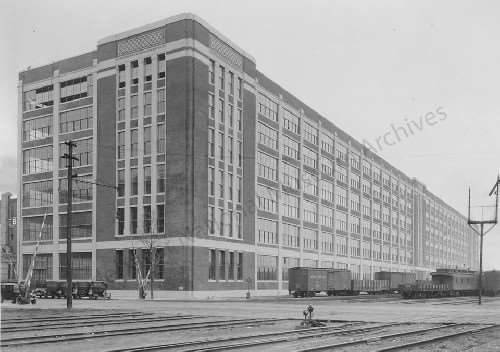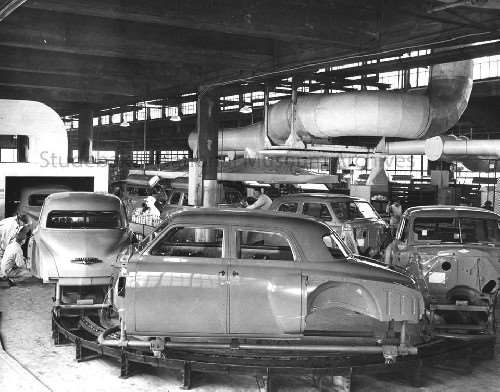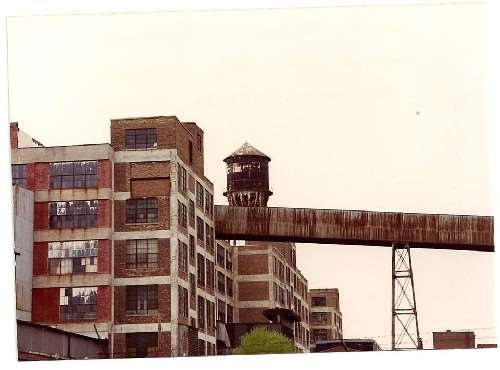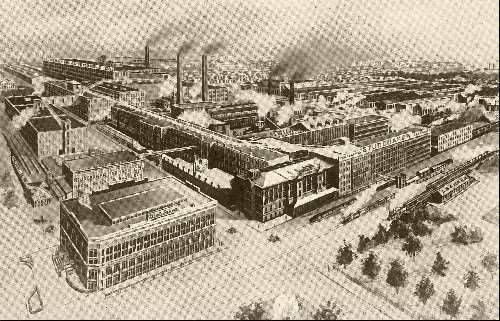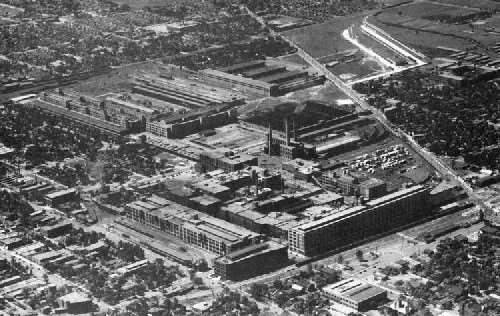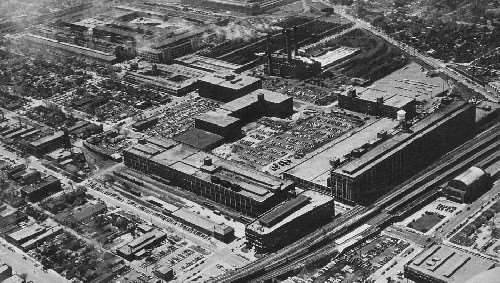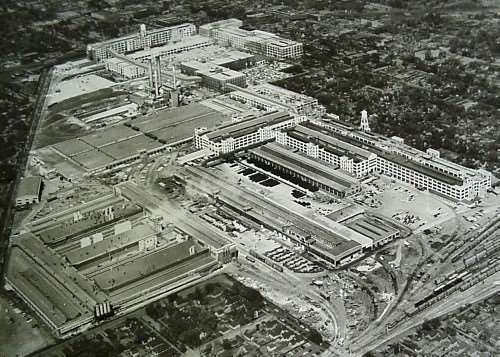|
Re: SP merger
|
||||
|---|---|---|---|---|
|
Home away from home

|
One of the Studebaker books I have read, I think it was the one about Harold Churchill, discussed that issue.
At the time of the closing of Detroit operations, the entire Nance crew was on the way out and long time Studebaker engineer Churchill became President, there were discussions about moving the Packard tooling to South Bend, which had plenty of surplus capacity, and continuing production. The Studebaker body plant, which had been built in the mid 20s, was narrow, and six stories tall. The Packard bodies were some 6-8" wider than the Studebaker bodies, and the paint booths and ovens would have needed to be widened to accommodate the Packard bodies. This would have cost into the millions. What the book did not go into was the powertrain. S-P had lost the use of the Utica plant to C-W, so at the minimum, the V8 line would have to have been reinstalled in South Bend, then either adopt a Borg Warner trans to it, or pay millions more to move the Ultramatic line to South Bend as well. What S-P ended up doing, tarting up a President and calling it a Clipper, was the only thing a broke company could do, and keep the Packard name alive in the event that there was an opportunity down the line to make "real" Packards again.
Posted on: 2015/2/26 17:30
|
|||
|
||||
|
Re: SP merger
|
||||
|---|---|---|---|---|
|
Home away from home

|
Here is an external view of the Studebaker body plant, as built in the mid 20s. An interior view from around 49-50. You can see how sharp the turn in the line is to squeeze it in. Third pic is the conveyor that was installed in 52 to take the bodies from the end of the trim line on the 6th floor and carry them to the assembly plant a block and a half away.
The entire South Bend complex screamed of poor planning and improvisation.
Posted on: 2015/2/26 17:45
|
|||
|
||||
|
Re: SP merger
|
||||
|---|---|---|---|---|
|
Home away from home

|
I didn't write my question well, sorry. I had heard that the Packards/Clippers wouldn't fit on the Studebaker line. What I was envisioning was moving the Studebaker Champion and Commander production to East Grand and building the Packards/Clippers and the Champion/Commander on the same line in Detroit, and close South Bend. I just wonder if the Champion/Commander would be to narrow to work on the Packard assembly line.
John
Posted on: 2015/2/26 18:00
|
|||
|
John Rhodes
1953 Packard Patrician |
||||
|
||||
|
Re: SP merger
|
||||
|---|---|---|---|---|
|
Home away from home

|
Hi
"The entire South Bend complex screamed of poor planning and improvisation." Just like Topsy in Uncle Tom's Cabin, when questioned about how she'd come to be answered "I just growed"; so too did Studebaker's factory complex. By the end of the 19th century, Studebaker was one of the largest manufacturers of horse-drawn vehicles. Building were expanded and added as demand warranted. By the advent of auto manufacturing, a good share of the facility was in place. Given that wagons didn't have overhanging bodies, narrow aisles weren't much of a problem. Until the envelop body became the norm, auto body widths weren't all that much wider than those built decades before. What's not so widely known is Studebaker sidled its way into auto production, initially contracting production with companies such as EMF, Flanders and Garford to brand their cars as Studebakers. Much of the production took place in Detroit and elsewhere rather than South Bend. Recalling past reading, the year 1920 comes to mind when automobile production finally began in South Bend when the last of the horse-drawn vehicle business was sold off. Moving Studebaker production to EGB might have been a possibility, if there weren't other major disastrous fires to be fought. Steve
Posted on: 2015/2/26 19:06
|
|||
|
.....epigram time.....
Proud 1953 Clipper Deluxe owner. Thinking about my next Packard, want a Clipper Deluxe Eight, manual shift with overdrive. |
||||
|
||||
|
Re: SP merger
|
||||
|---|---|---|---|---|
|
Forum Ambassador
|
With an antiquated or improvised factory Studebaker still managed to build quite a few cars -- From what I've read it wouldn't seem like Packard could have handled theirs and Studebakers -- even with the double line. When you also factor in the personalities that were dead set against a multi story factory at any cost, even if it were possible to build both it seems even less likely they would have tried.
Posted on: 2015/2/26 19:29
|
|||
|
Howard
|
||||
|
||||
|
Re: SP merger
|
||||
|---|---|---|---|---|
|
Home away from home

|
Quote:
My suspicion is that E Grand could not have handled the volume of 150,000 Studebakers, and 50,000 Packards. Conner certainly couldn't. Conner couldn't even turn out 55,000 with acceptable quality. The second problem is the way the merger was structured. Because the shares were allocated according to book value, instead of market value, the Studebaker holders ended up with a controlling interest in S-P. I think it's the Ward book that talks about how the Board of Directors was constantly hamstrung because the Studebaker holders wouldn't give up anything in South Bend, and the Packard management wouldn't give up anything in Detroit. They couldn't even agree to shut down one of the proving grounds. (Studebaker's was about twice the size of PPG), so the broke company kept paying the costs to run two proving grounds.
Posted on: 2015/2/26 20:26
|
|||
|
||||
|
Re: SP merger
|
||||
|---|---|---|---|---|
|
Home away from home

|
It wouldn't happen for the reason you stated but I think I would rather build 50,000 Packards and max out E Grand with however many Studebakers you can build there, maybe 100,000-125,000. Maxing out the plant even if you could sell more than you can build is better than having two plants that cant even breakeven.
John
Posted on: 2015/2/26 20:38
|
|||
|
||||
|
Re: SP merger
|
||||
|---|---|---|---|---|
|
Home away from home

|
Quote:
Here are some pix of the South Bend complex from roughly the same angle. First, from before WWI. The 1909 Administration building is in the lower left corner, with the main wagon plant complex across Lafayette St, with the Studebaker sign in block letters. In the upper right of the picture is the huge lumber yard that supported wagon production. The lumber yard area later became home to the foundry, engine plant, stamping plant and final assembly buildings. Second pic, late 1920s. The Administration building is again at the lower left. Building 84, the body plant, has been built fronting on the railroad tracks across Lafayette from the admin building, but the rest of that block is still occupied by old wagon plant buildings. The lumber yard has now been replaced with auto production facilities. Third pic: roughly 1948. Most of the old wagon works have been cleared from the block where building 84 is. The two story building just behind 84 is 113, built in 1945. Fourth pic: post 1952, seen from the south side of the complex, building 84 is now at the top of the pic, shows the conveyor that was added to carry finished bodies from the sixth floor of building 84 to the final assembly complex. For my money, Studebaker is to be commended for getting into automobiles at all. They already had a nationwide sales network. Hooking up first with Garford, then EMF was an excellent way to get a new product line for their sales network to distribute. It cannot be emphasized enough what a huge advantage Studebaker had over Ford, or Henry Leyland's Cadillac, or Oldsmobile, or Packard for that matter, in name recognition and distribution. This does bring up a question that puzzles me though: with their strength in commercial, farm and military wagons, why didn't Studebaker get into trucks until the late 30s, when they had lost the market advantage their wagons had given them? iirc, the EMF plant in Detroit had been closed for some years in the 20s, when it was reopened to product the Rockne. Harold Churchill's first job at Studebaker was at the Rockne operation in Detroit, before he moved to South Bend.
Posted on: 2015/2/26 20:52
|
|||
|
||||
|
Re: SP merger
|
||||
|---|---|---|---|---|
|
Home away from home

|
Hi Steve203
"This does bring up a question that puzzles me though: with their strength in commercial, farm and military wagons, why didn't Studebaker get into trucks until the late 30s, when they had lost the market advantage their wagons had given them?" That's a question that's been asked repeatedly. Apparently the Studebaker brothers were conservative and cautious in extreme. As you correctly point out, their name and reputation was supreme throughout the country for rugged commercial vehicles and a natural fit for succession into motor trucks. By not pursuing that market, the brothers left millions on the table. They are to be commended for taking advantage of their established dealer network by adding Studebaker-branded cars early, though probably crippled their long-term market dominance by the timid, incremental approach. Steve
Posted on: 2015/2/27 9:17
|
|||
|
.....epigram time.....
Proud 1953 Clipper Deluxe owner. Thinking about my next Packard, want a Clipper Deluxe Eight, manual shift with overdrive. |
||||
|
||||

 (79.09 KB)
(79.09 KB)